Better employee experience with new ServiceNow Quebec Universal Request
A new ServiceNow release usually equals new exciting features! As such, I thought I would put together a piece surrounding one of my favourites from Quebec: the Universal Request. Initially available in Paris as a limited release, this is now under general availability in the latest release.
Why was Universal Request built?
ServiceNow initially built its applications such as ITSM, HR, Finance, Legal, etc in isolation as that’s how their clients operated. However, this made it challenging for employees to figure out which department to go to for support.
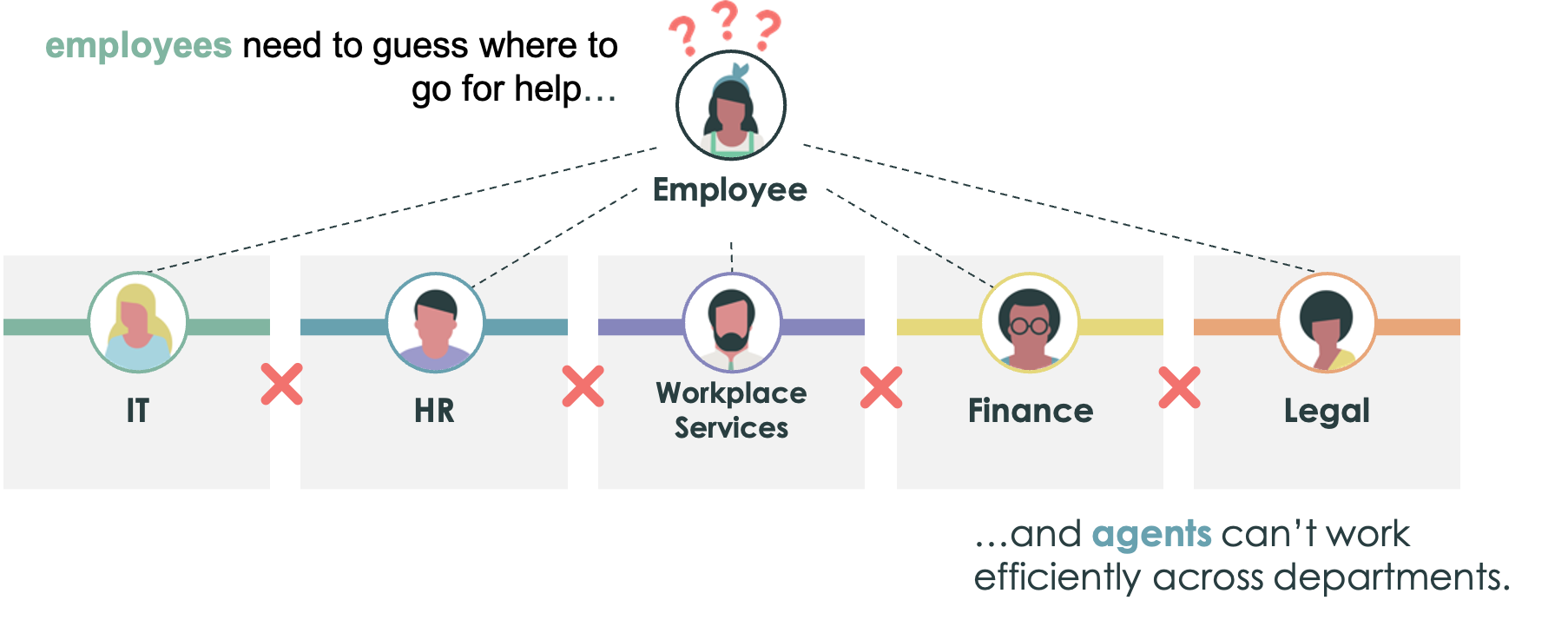
What is Universal Request?
In a nutshell, the Universal Request (UR) application provides a Universal Request record that acts as a parent to other tickets such Incident, HR Case, etc for the same employee, thus allowing cross-departmental collaboration and reporting, as well as ensuring an end-to-end experience for employees.
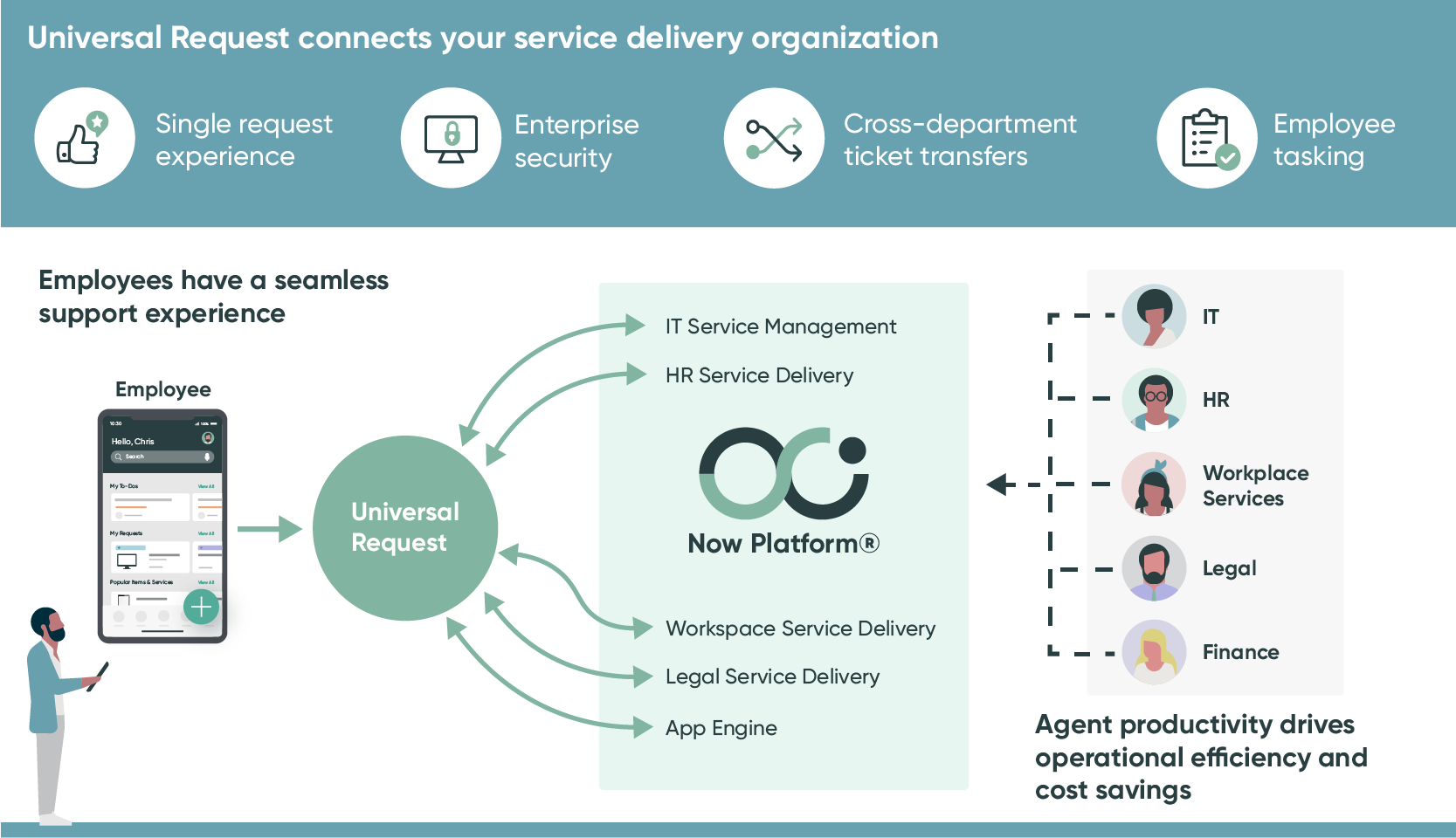
What are the benefits?
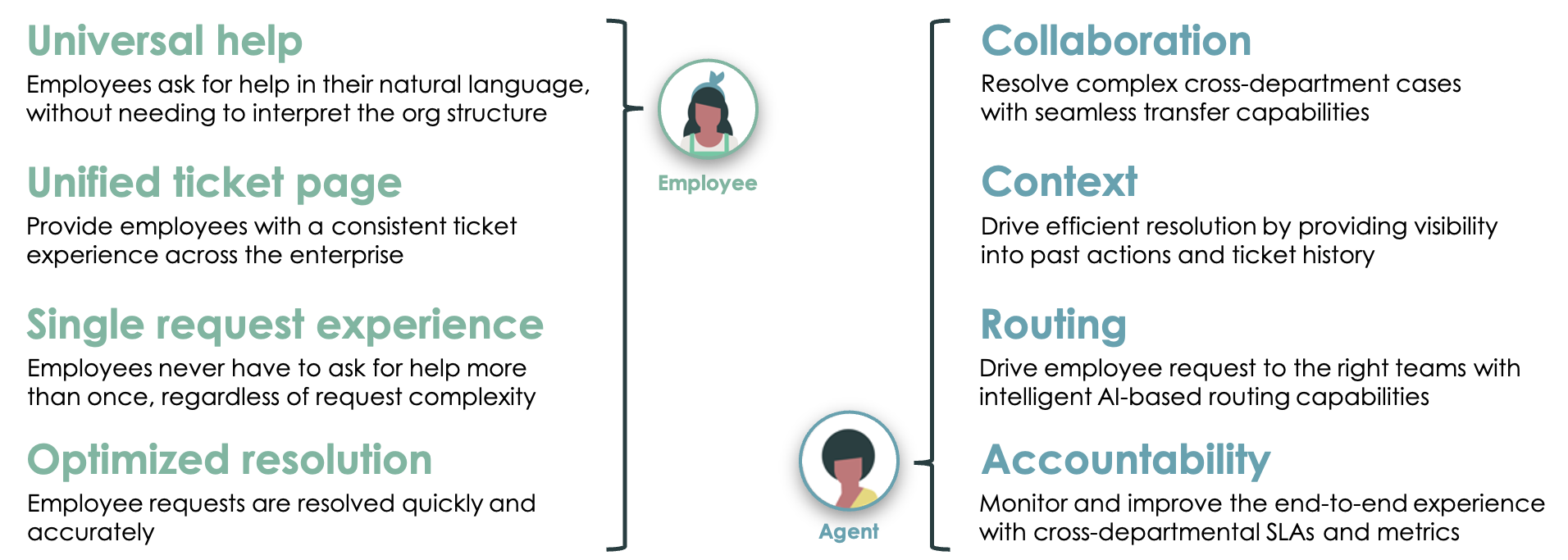
Agent features
Universal Request Form
The Universal Request form allows tier 1 agents to:
- Update the ticket and resolve it themselves
- Escalate to IT department via Create Incident
- Escalate to the HR department via Create HR Case
- Escalate to another department via a custom button
Each Universal Request ticket can have multiple child requests e.g. Incident, HR Case, etc. An active child request is called the Primary Ticket and a Universal Request ticket may only have one Primary Ticket at any given time.
Transfer button
There will be a Transfer button on the Primary Ticket’s form, this allows departments to transfer the UR’s primary ticket to another, e.g. Incident can be transferred to HR Cases.
Agent Workspace for UR
Installation of UR application also provides pre-built lists, forms, buttons, etc for Universal Request within Agent Workspace, allowing for quick setup with minimal configurations required.
Employee features
Request Help link and Record Producer (request submission form)
The UR application comes with a Request Help link within the portal if the employee is unable to find a relevant search result. This link can direct the employee to the Request Help record producer (request submission form) in order to raise a Universal Request ticket.
Generate UR Ticket from any Record Producer
ServiceNow admins can set up Record producers from any application to generate a UR Ticket along with a Primary Ticket e.g. Incident, HR Case, etc. on submission.
For example, a General Inquiry record producer from the HR application can be set to generate a UR ticket on submission so the employee sees and interacts only with that UR ticket. Meanwhile, an HR Case ticket is also generated and assigned as the Primary ticket of the UR ticket. The HR Case ticket is where the HR agent will work. Communication and updates are synced between the two tickets.
Standard Ticket Page
Like other tickets, Universal Requests appear under My Requests. However, when a Universal Request ticket is selected it opens in the newly created Standard Ticket Page.
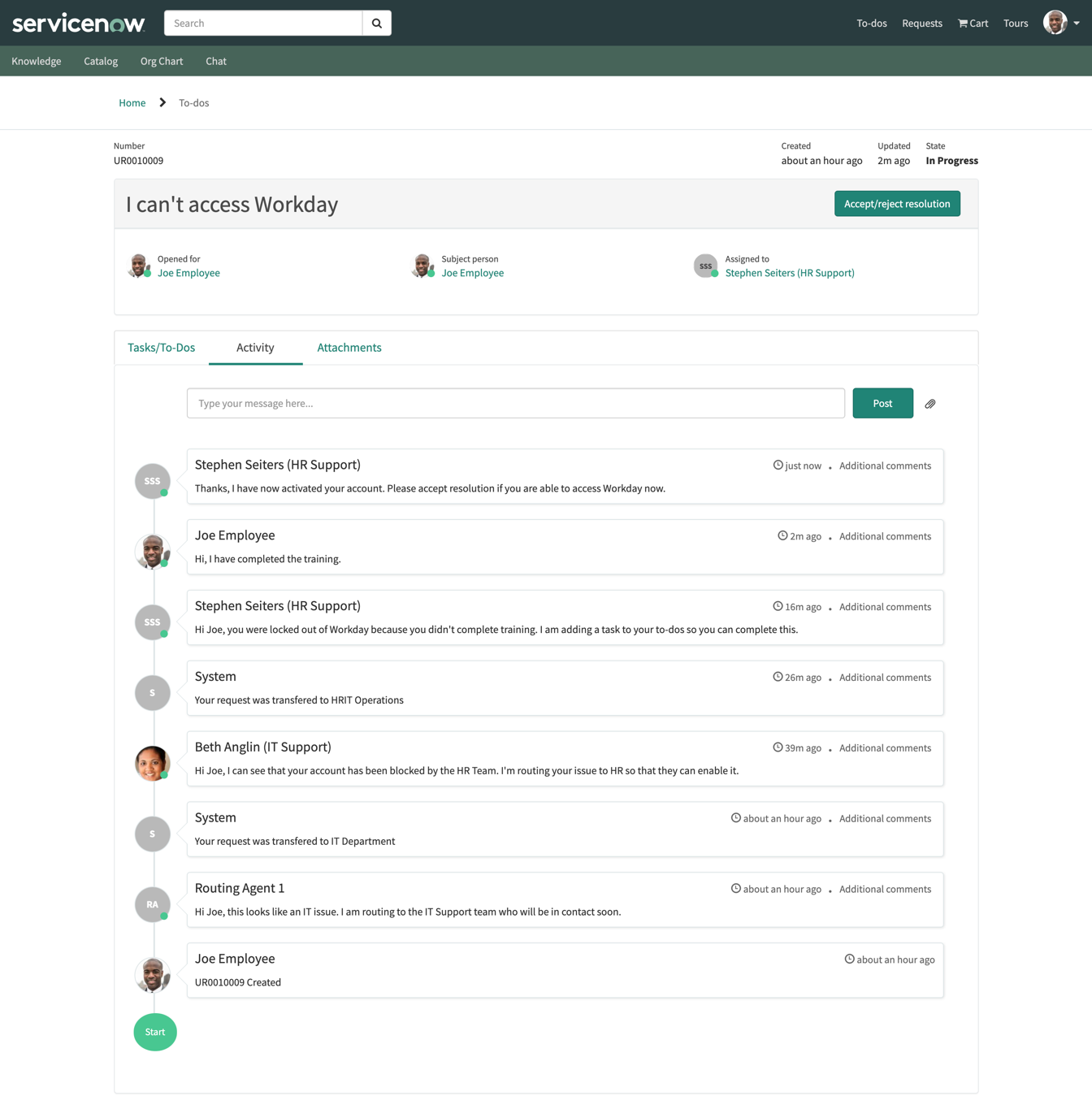
The ticket shown above has had an Incident ticket opened at some point, and then an HR ticket, with agents providing comments, updates, and tasks/to-dos on various tickets. However, from the Employee’s perspective, everything is in one place under the UR ticket.
Universal Task Application
The Universal Request solution can be expanded further by installing the Universal Task Application.
This will provide Agents the ability to assign Universal Tasks from a Primary Ticket e.g. Incident with a task type of Submit Catalog Item or Upload Documents.
This can solve scenarios where for example employees may try to take shortcuts by submitting an incident or general inquiry to order items. The agent could raise a Universal Task with Submit Catalog Item and the employee would see this in their to-dos under the Universal Request.
Scenario: Service Delivery without UR
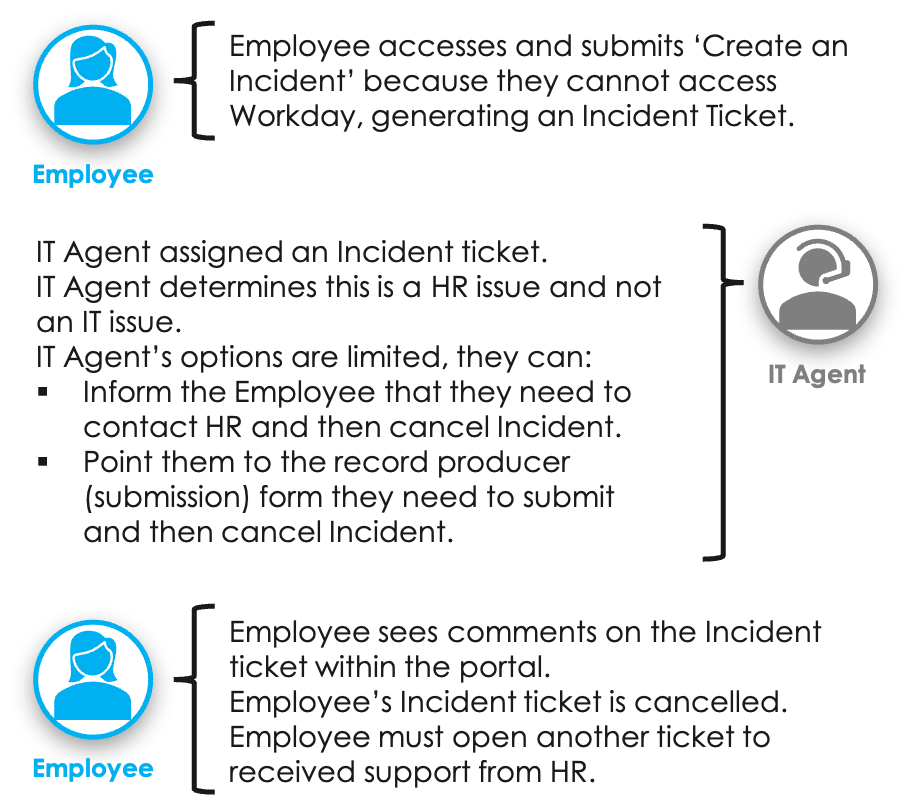
Scenario: Service Delivery with UR

Final Thoughts
Overall, with the introduction of Universal Request and the use of one unified parent ticket, there is a solution in place to tackle the often-repeated client challenges of:
- Providing an end-to-end experience for employees;
- Collaborating more easily across multiple departments.
Reporting on actual overall time spent from the initial request being raised to resolution, while also providing the ability to see time spent by each department.
Out-of-the-box features for the portals, agent workspace, etc ensure that setup is quick. Meanwhile, the guided setup modules allow for easy expansion to services outside Incident and HR.
Furthermore, configurations can be easily made through the configuration and properties modules.
Keep an eye on our blog posts as we continue to spotlight other Quebec functionalities and deep dive into some of the new release capabilities. Our next blog from the Quebec series will explore the Quebec Localization Framework and Flow Designer variables.
- Contact us:
- 0800 783 3040
- info@engage-esm.com